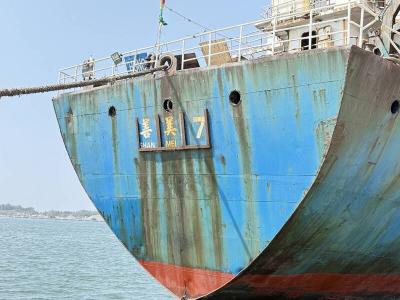Three years of observation of atmospheric lightning phenomena — a temporary colorful lightning appearing high in the sky during thunderstorms — recently allowed a research team at National Cheng Kung University’s Department of Physics the be first in the world to present a detailed global map of the events.
In a press release yesterday, the department’s Imager of Sprite and Upper Atmosphere Lightning (ISUAL) research team said that images taken over the past three years by the satellite FORMOSAT-2 showed that 80 percent of the luminous phenomena the team recorded were “elves,” or red bursts of light in the shape of donuts in the sky caused by lightning.
The other 20 percent of the luminous events recorded by the team were made up of “sprites” — a bell-shaped flash of light appearing about 50km to 90km in the air during thunderstorms — and two other types of lightning: “halos” and “gigantic jets,” the release said.
Hsu Ruey-rong (許瑞榮), a professor of physics from the department who was responsible for the research, said that images taken by the satellite had helped the team analyze the locations where “sprites” and “elves” were more likely to be found.
The team found that “elves” usually appeared above the sea, such as the Caribbean Sea, the South China Sea, east Indian Ocean, and the central, west and southwestern Pacific Ocean, while “sprites” tended to show up above land such as central Africa, Hsu said.
Su Han-tzong (蘇漢宗), another professor of physics at the department, said the research team also found that warm seawater — above 26°C — might contribute to “elves.”
“A warm ocean surface can provide the heat source needed to drive intense oceanic lightning with very high peak currents, which usually generate elves in the ionosphere,” Alfred Chen (陳炳志), a professor of astronomy at the school, said in an interview with the New Scientist.
“Elves could have an important global effect on the lower ionosphere and the total electron content,” said Chen.
“Elf hotspots may increase the electron density of the ionosphere by 5 percent or more, which could interfere with ground and space communication as well as navigation systems,” he said.
The university organized the nation’s first “sprite” research team in 1998 and has cooperated with National Central University, National Chiao Tung University, the University of California, Berkeley, and Japan’s Tohoku University, in its research into atmospheric lightning phenomena over the past decade.
The research results of the ISUAL team — which consists of Hsu, Su, Chen and other researchers — was recently publicized in the Journal of Geophysical Research.
ADDITIONAL REPORTING BY CNA

An undersea cable to Penghu County has been severed, the Ministry of Digital Affairs said today, with a Chinese-funded ship suspected of being responsible. It comes just a month after a Chinese ship was suspected of severing an undersea cable north of Keelung Harbor. The National Communications and Cyber Security Center received a report at 3:03am today from Chunghwa Telecom that the No. 3 cable from Taiwan to Penghu was severed 14.7km off the coast of Tainan, the Ministry of Digital Affairs said. The Coast Guard Administration (CGA) upon receiving a report from Chunghwa Telecom began to monitor the Togolese-flagged Hong Tai (宏泰)

A cat named Mikan (蜜柑) has brought in revenue of more than NT$10 million (US$305,390) for the Kaohsiung MRT last year. Mikan, born on April 4, 2020, was a stray cat before being adopted by personnel of Kaohsiung MRT’s Ciaotou Sugar Refinery Station. Mikan was named after a Japanese term for mandarin orange due to his color and because he looks like an orange when curled up. He was named “station master” of Ciaotou Sugar Refinery Station in September 2020, and has since become famous. With Kaohsiung MRT’s branding, along with the release of a set of cultural and creative products, station master Mikan

RISING TOURISM: A survey showed that tourist visits increased by 35 percent last year, while newly created attractions contributed almost half of the growth Changhua County’s Lukang Old Street (鹿港老街) and its surrounding historical area clinched first place among Taiwan’s most successful tourist attractions last year, while no location in eastern Taiwan achieved a spot in the top 20 list, the Tourism Administration said. The listing was created by the Tourism Administration’s Forward-looking Tourism Policy Research office. Last year, the Lukang Old Street and its surrounding area had 17.3 million visitors, more than the 16 million visitors for the Wenhua Road Night Market (文化路夜市) in Chiayi City and 14.5 million visitors at Tainan’s Anping (安平) historical area, it said. The Taipei 101 skyscraper and its environs —

Taiwan on Friday said a New Zealand hamburger restaurant has apologized for a racist remark to a Taiwanese customer after reports that it had first apologized to China sparked outrage in Taiwan. An image posted on Threads by a Taiwanese who ate at Fergburger in Queenstown showed that their receipt dated Sunday last week included the words “Ching Chang,” a racial slur. The Chinese Consulate-General in Christchurch in a statement on Thursday said it had received and accepted an apology from the restaurant over the incident. The comment triggered an online furor among Taiwanese who saw it as an insult to the